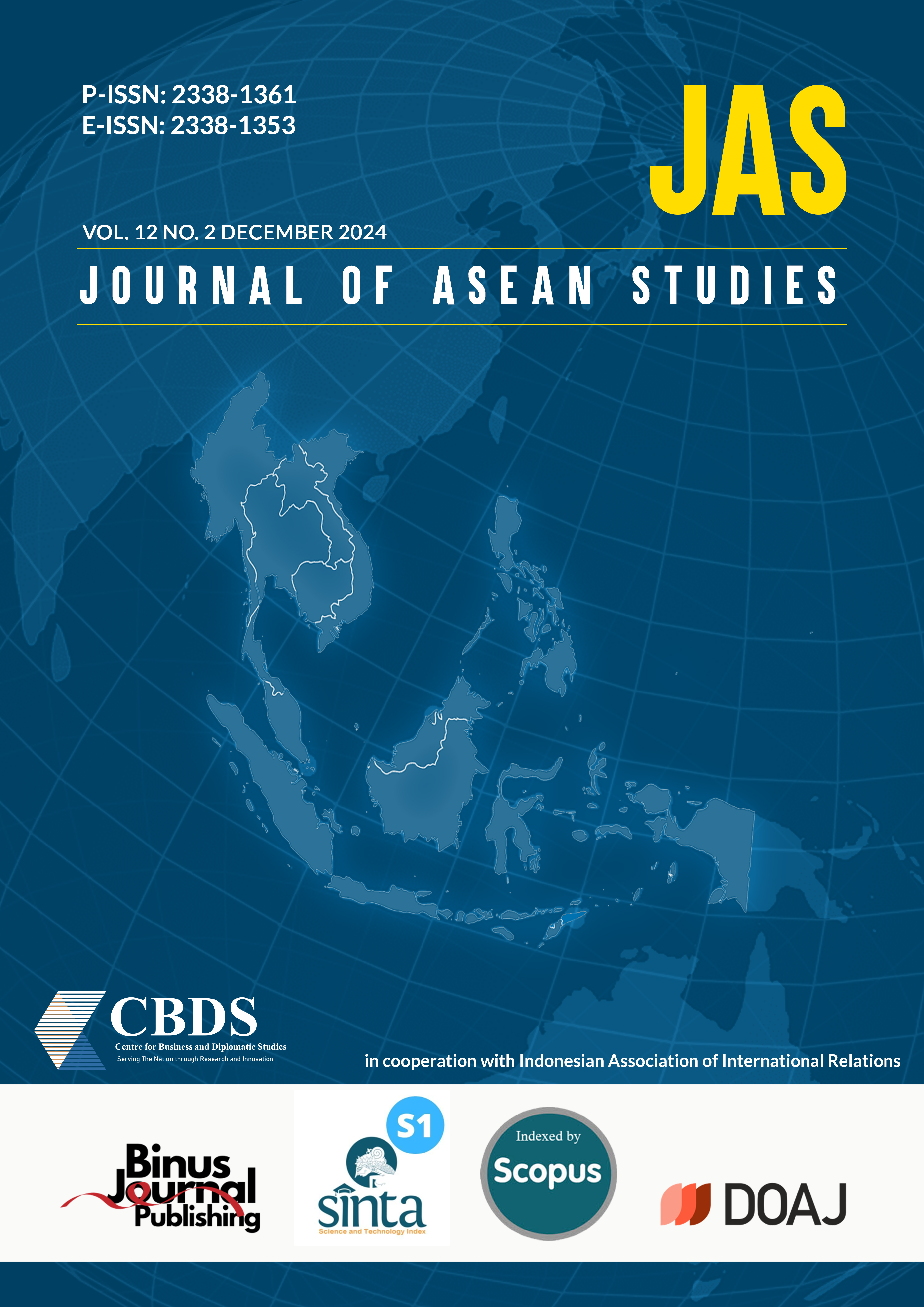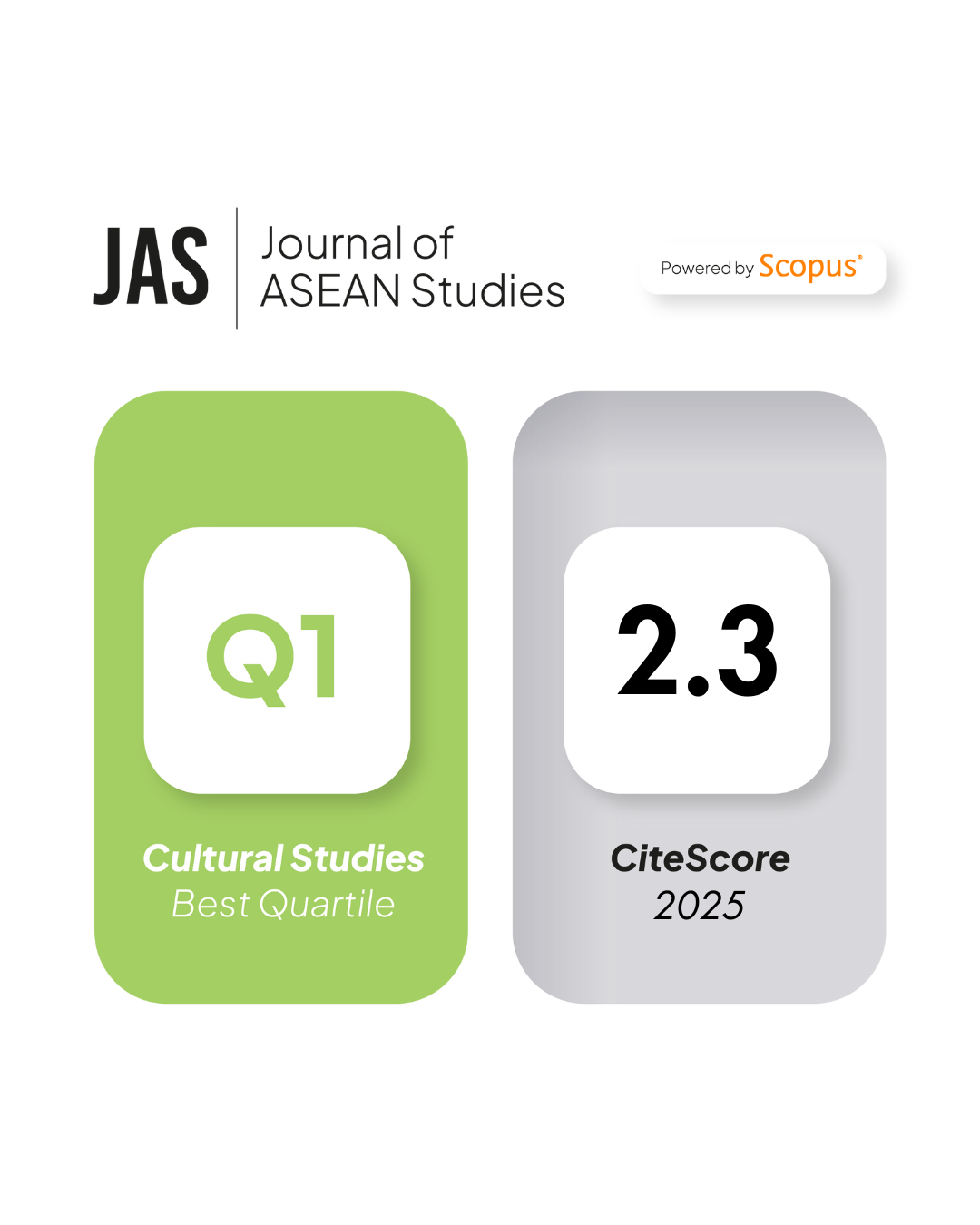The Market Interest of Electric Vehicle in ASEAN Through Digital Analytics and Industry Performance
DOI:
https://doi.org/10.21512/jas.v12i2.9091Keywords:
market interest, Electric Vehicle (EV), ASEAN, digital marketing, industry performanceAbstract
The electric vehicle industry is considered the next generation of the automotive sector. ASEAN, specifically, comprises three major electric vehicle markets: Indonesia, Thailand, and Malaysia. However, can this sector displace the fossil fuel automotive, which has dominated for many years? Changes in technology and policies across countries have pushed the automotive industry further towards environmental concerns. Growing businesses must be in line with environmental sustainability. Indonesia may be described as having a burgeoning and constantly changing curiosity that tends to be dynamic and impulsive. From 2020 to 2023, Malaysia saw a notable increase in interest in Electric Vehicle (EV), comparable to Indonesia. The examination of interest in Malaysia yields an overall index of 25.65. It is below Indonesia’s rate of 32.76 but above Thailand’s rate of 11.87. By analyzing the three trend graphs, it is clear that the interest in electric automobiles in Indonesia have experienced the most substantial increase, while Malaysia has shown the second highest level of interest. Indonesia encounters the lowest level of buying power in comparison to the remaining two countries. Thailand, being the foremost motor vehicle producer in Southeast Asia, is anticipated to see a decline in customer demand for EV. However, the growth and decline of market interest in the future will be driven by industry players and policy makers in each country, broadly in the ASEAN region.
References
Abeam Consulting. (2022, August 31). Accelerating electric vehicle adoption in Southeast Asia. https://www.abeam.com/th/en/insights/electric_vehicle/
Barus, D. H. N. (2024). 33 Strategi Marketing Terpenting Dekade Ini. PT Kanisius. Gramedia Pustaka Utama
Barus, D. H. N. (2022). How peer influence and social media impact on campus preference. International Journal of Business and Technology Management, 4(3), 263−273. https://myjms.mohe.gov.my/index.php/ijbtm/article/view/19984
Chu, W., Im, M., Song, M. R., & Park, J. (2019). Psychological and behavioral factors affecting electric vehicle adoption and satisfaction: A comparative study of early adopters in China and Korea. Transportation Research Part D: Transport and Environment, 76, 1–18. https://doi.org/10.1016/j.trd.2019.09.009
Çoban, M. N. (2022). The effect of the Internet on inflation: A research on ASEAN-5 countries. Journal of ASEAN Studies, 10(1), 61−79. https:/doi.org/10.21512/jas.v10i1.7310
Dobbs, M. E. (2014). Guidelines for applying Porter's Five Forces framework: A set of industry analysis templates. Competitiveness Review, 24(1), 32–45. https://doi.org/10.1108/CR-06-2013-0059
Frost & Sullivan. (2018, January). The future of electric vehicles in South East Asia. https://www-asia.nissan-cdn.net/content/dam/Nissan/th/news/purchasedecisionresearch/Nissan_whitepaper_TH.pdf
GAIKINDO. (2020). Indonesian automobile industry data. https://www.gaikindo.or.id/indonesian-automobile-industry-data/
Giansoldati, M., Rotaris, L., Scorrano, M., & Danielis, R. (2020). Does electric car knowledge influence car choice? Evidence from a hybrid choice model. Research in Transportation Economics, 80. https://doi.org/10.1016/j.retrec.2020.100826
Google (2021). https://www.thinkwithgoogle.com/intl/en-apac/consumer-insights/consumer-trends/research-on-apac-shopper-behavior/
Google/Shopper Sciences, Zero Moment of Macro Study, Apr 2011
Gomółka, K., & Kasprzak, P. (2021). Directions and prospects for the development of the electric car market in selected ASEAN countries. Energies, 14(22), 1–16. https://doi.org/10.3390/en14227509
International Energy Agency. (2019, May). Global EV outlook 2019: Scaling up the transition to electric mobility. https://www.iea.org/reports/global-ev-outlook-2019
International Monetary Fund. (2021). World Economic Outlook: recovery During Pandemic, Health Concerns, Supply Disruptions, and Price Pressures.
Krishnan, V. V., & Koshy, B. I. (2021). Evaluating the factors influencing purchase intention of electric vehicles in households owning conventional vehicles. Case Studies on Transport Policy, 9(3), 1122–1129. https://doi.org/10.1016/j.cstp.2021.05.013
Land Transport & Authority Singapore. (2024). https://www.lta.gov.sg/content/ltagov/en/industry_innovations/technologies/electric_vehicles/transitioning_to_evs.html#:~:text=EV%20Early%20Adoption%20Incentive%20(EEAI,ARF)%2C%20capped%20at%20%2415%2C000.
Langbroek, J. H., Cebecauer, M., Malmsten, J., Franklin, J. P., Susilo, Y. O., & Georén, P. (2019). Electric vehicle rental and electric vehicle adoption. Research in Transportation Economics, 73, 72–82. https://doi.org/10.1016/j.retrec.2019.02.002
Liao, F., Molin, E., Timmermans, H., & Van Wee, B. (2019). Consumer preferences for business models in electric vehicle adoption. Transport Policy, 73, 12–24. https://doi.org/10.1016/j.tranpol.2018.10.006
Liu, X., Sun, X., Zheng, H., & Huang, D. (2021). Do policy incentives drive electric vehicle adoption? Evidence from China. Transportation Research Part A: Policy and Practice, 150, 49–62. https://doi.org/10.1016/j.tra.2021.05.013
MTIC. (2014). Review to formulate a roadmap and draft national masterplan for a sustainable land transportation system for Brunei Darussalam; Executive summary. https://www.mtic.gov.bn/Resources/LAND%20TRANSPORT%20MASTER%20PLAN%20-%20Executive%20Summary.pdf
Natsuda, K., & Thoburn, J. (2013). Industrial policy and the development of the automotive industry in Thailand. Journal of the Asia Pacific Economy, 18(3), 413–437. https://doi.org/10.1080/13547860.2012.742690
Porter, M. E. (1979). How competitive forces shape strategy. Harvard Business Review. https://hbr.org/1979/03/how-competitive-forces-shape-strategy
Rajasekar, J., & Al Raee, M. (2013). An analysis of the telecommunication industry in the Sultanate of Oman using Michael Porter's competitive strategy model. Competitiveness Review, 23(3), 234–259. https://doi.org/10.1108/10595421311319825
Riyanto, B., Djumala, D., & Tan, Y. (2023). Indonesia’s strategic narrative on the new dynamics of great power rivalry in the Indo-Pacific. Journal of ASEAN Studies, 11(1), 143–166. https://doi.org/10.21512/jas.v11i1.9406
Rodyanto, F. (2019, October 22). Indonesia looks to accelerate battery electric vehicle program. SSEK. https://www.ssek.com/blog/indonesia-looks-to-accelerate-battery-electric-vehicle-program
Schumpeter, J. (1934). The theory of economic development: An inquiry into profits, capital, credit, interest, and the business cycle. Harvard University Press.
Smart Insights. https://www.smartinsights.com/digital-marketing-strategy/digital-strategy-development/10-reasons-for-digital-marketing-strategy/
Sovacool, B. K., Abrahamse, W., Zhang, L., & Ren, J. (2019). Pleasure or profit? Surveying the purchasing intentions of potential electric vehicle adopters in China. Transportation Research Part A: Policy and Practice, 124, 69−81. https://doi.org/10.1016/j.tra.2019.03.002
Sun, X., and S. Xu. "The impact of government subsidies on consumer preferences for alternative fuel vehicles." J. Dalian Univ. Technol.(Soc. Sci.) 3 (2018): 8-16.
Tahalele, M. P., Dhiaulhaq, A., Putra, R. A., Affandi, R. A., Arnakim, L. Y., & Mursitama, T. N. (2022). The trajectory and trend of International political economy in Southeast Asia. Journal of ASEAN Studies, 10(2), 181–206. https://doi.org/10.21512/jas.v10i2.9184
Wen, W., Yang, S., Zhou, P., & Gao, S. Z. (2021). Impacts of COVID-19 on the electric vehicle industry: Evidence from China. Renewable and Sustainable Energy Reviews, 144, 1–20. https://doi.org/10.1016/j.rser.2021.111024
Xiao, H., & Zhang, S. (2021). Purchase intention model of the first batch of consumers of green track changing high-tech products in China—A multiple comparative study based on automobile industry. Management Review, 33, 103–119.
Zhang, W. (2021). Research on emotion fluctuation of pure electric vehicle consumers based on composite comments. Guizhou Soc. Sci, 124-132.
Downloads
Published
How to Cite
Issue
Section
License
Copyright (c) 2024 Dianta Hasri Natalius Barus

This work is licensed under a Creative Commons Attribution-NonCommercial 4.0 International License.






















